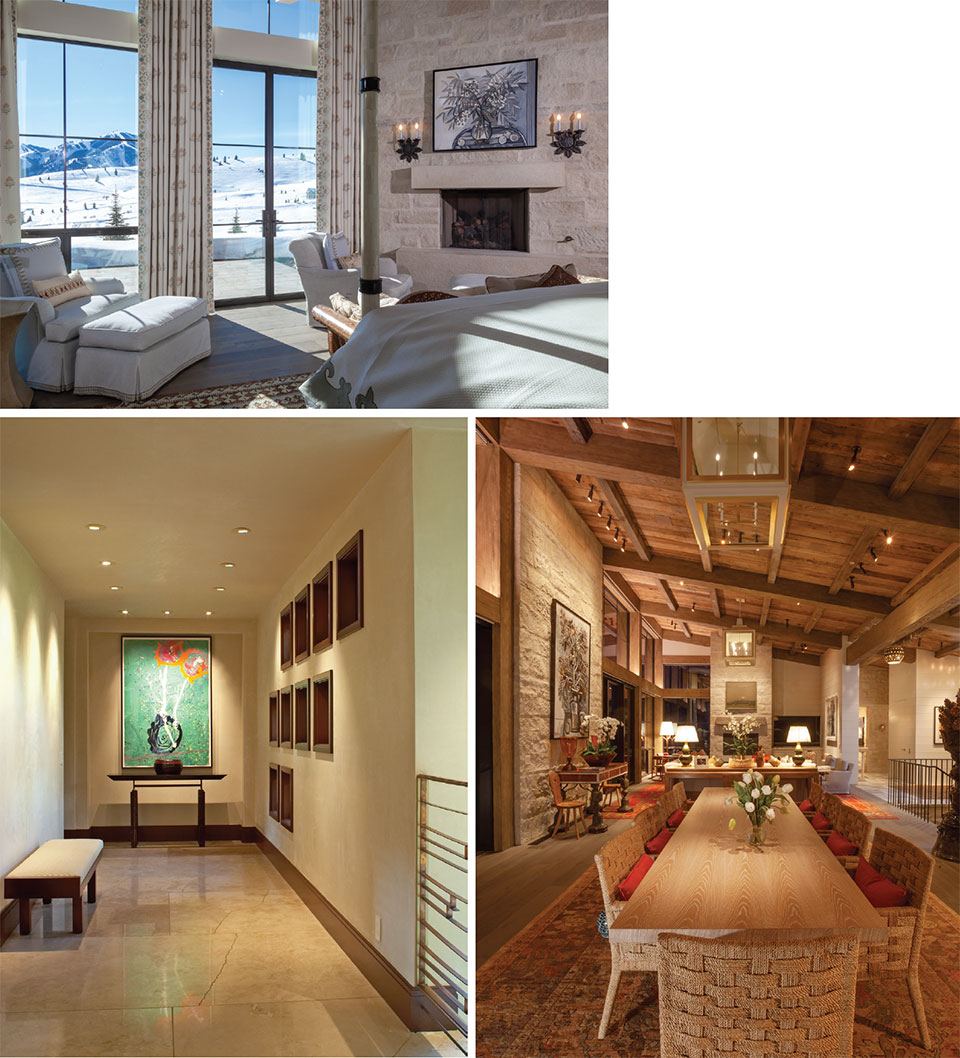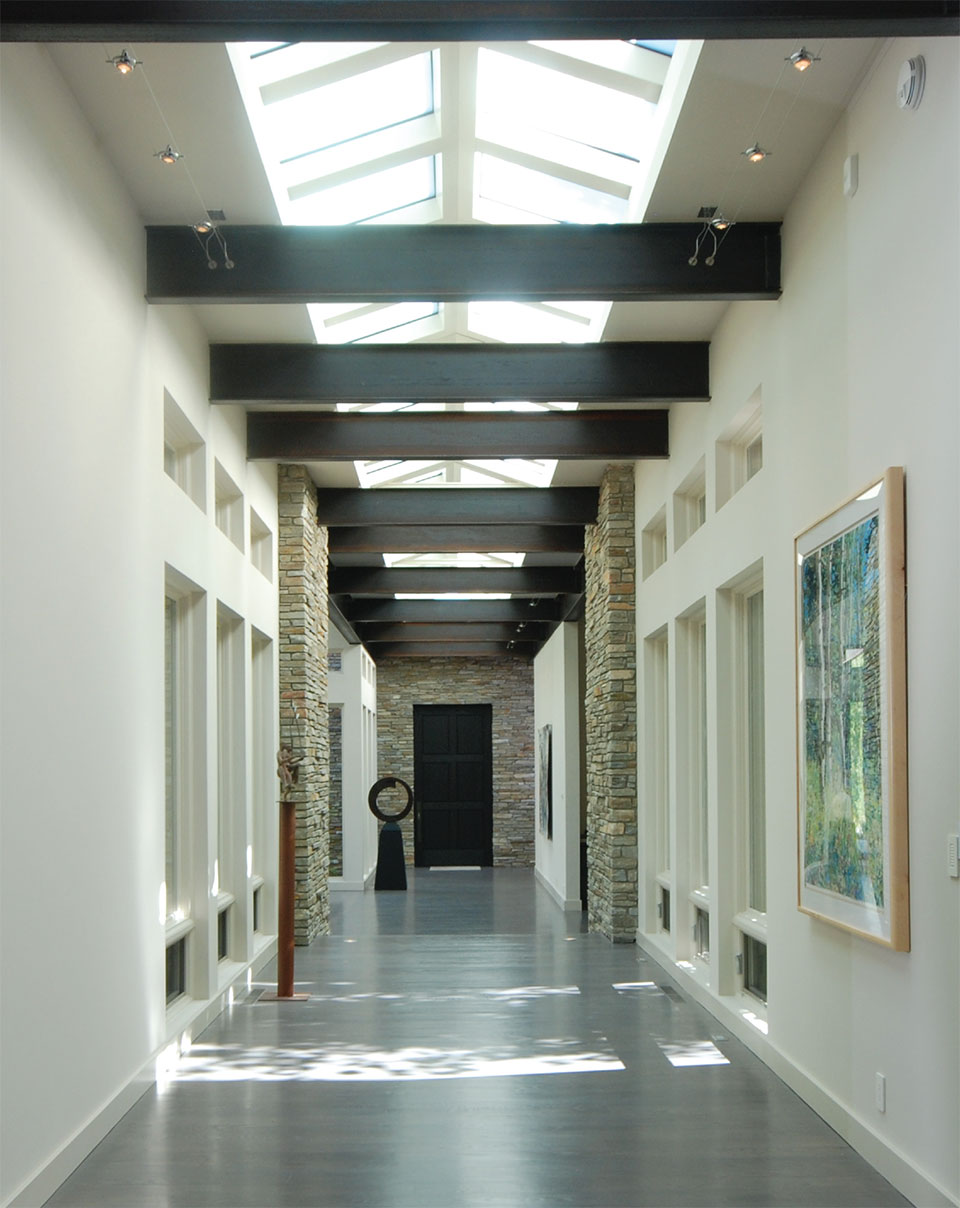A View of the Art Market
by Suzanne Hazlett MBA, CIMA®, CFP®
Physical environments are transformed by how art is used within them, resulting in a fusion that creates beautiful, inspiring, and emotionally uplifted spaces. The synthesis of art and architecture can transcend the sum of its parts. When researching art and other somewhat subjective investments, it can be challenging to find unbiased and authentic information. Here, learn how designers, architects, and consultants work collaboratively to establish the presence of fine art as an integral element of design.
While financial markets continue their volatile trajectory, and as central banks battle inflation, art collectors have renewed their commitment to the art market over the past year, engaging with live exhibitions, auctions, and fairs. Worldwide art and antiques sales reached an estimated $67.8 billion in 2022, up three percent compared with a year earlier, lifting the market higher than its pre-pandemic level in 2019, according to the annual Art Basel and UBS Global Art Market Report published in April.
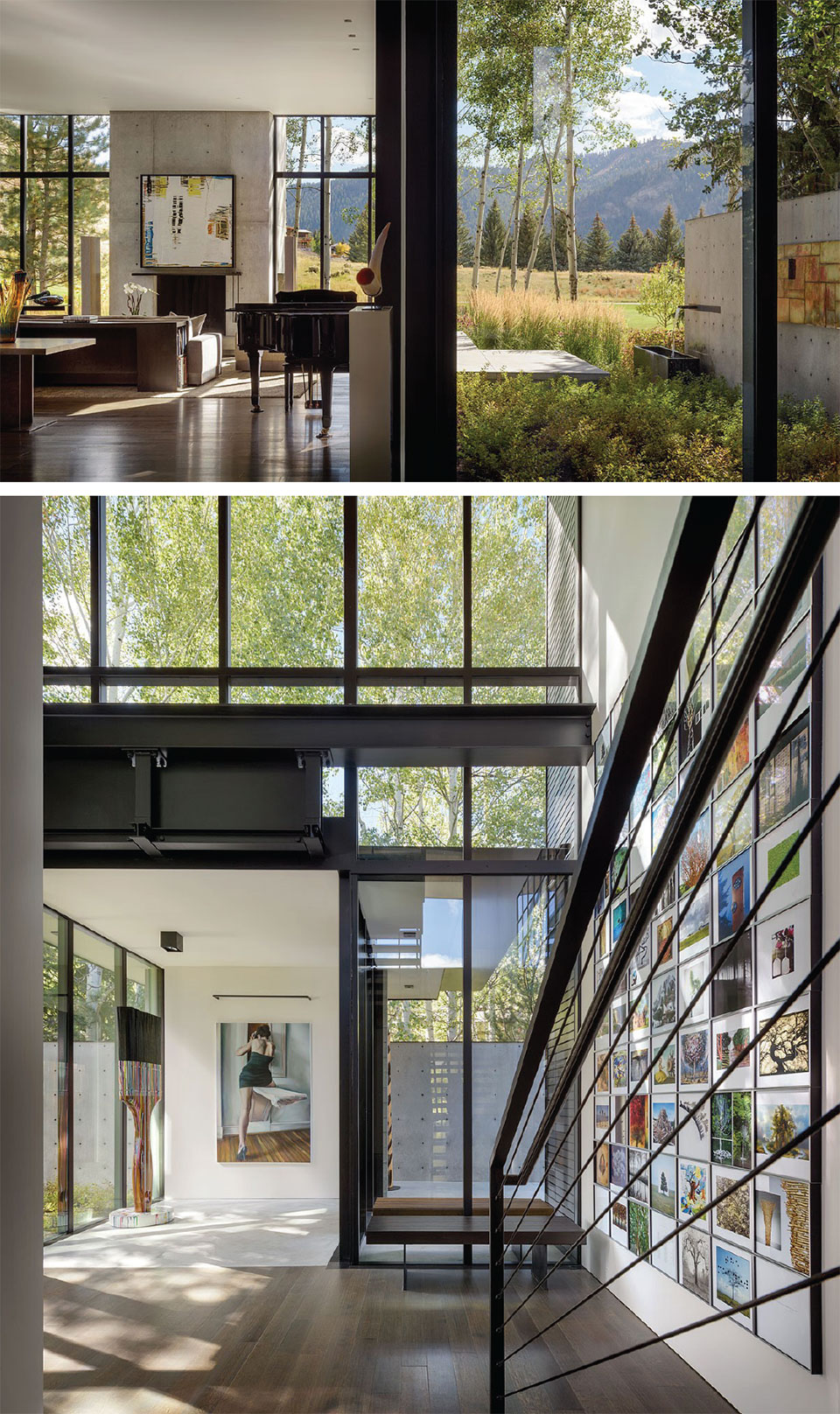
Andria Friesen
“There is a distinctly different feeling one experiences when stepping into a space that has been curated and collected versus decorated and adorned. With new home construction, art is often an afterthought—and too often the first thing to be cut or diminished if a project runs over budget.”
“Proper lighting is paramount to appropriately showcasing and celebrating artwork. The lighting schematic can be specific when said placement for major or large-scale works is known in advance.”
“Without a well-conceived lighting and art installation plan, lighting can be disappointingly installed in a standard format and is seldom changed later to well-accommodate the art. Early investment in a lighting plan to illuminate art will reap aesthetic and financial rewards. The cost of retrofitting lighting, electrical switches, and outlets is typically tenfold above the initial installation cost.”
Andria Friesen
Ketchum, Idaho
“Proper lighting is paramount to appropriately showcasing and celebrating artwork.”
–Andria Friesen, Art Advisor
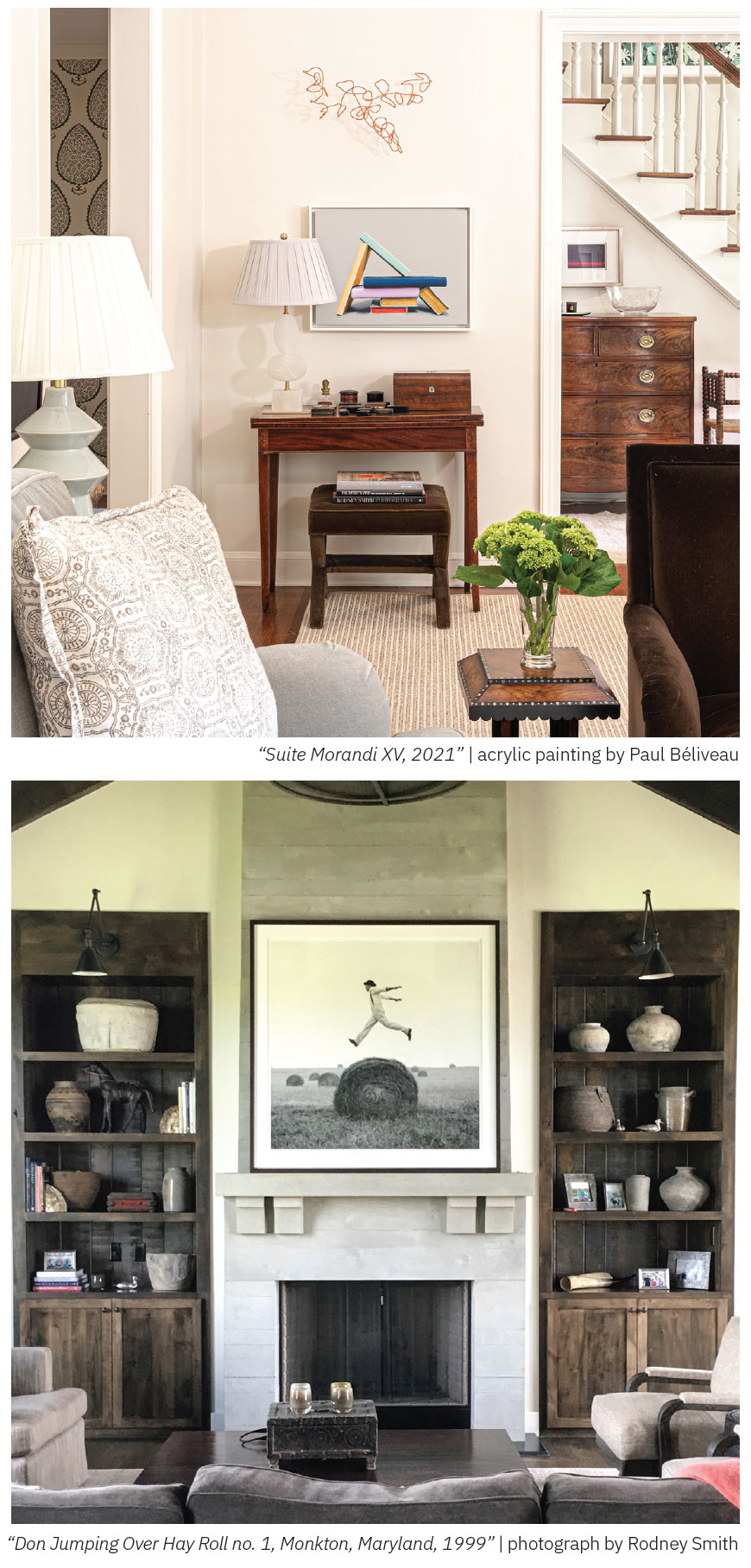
L’Anne Gilman
“When we work with a consultant, it is important for us to know what types of art the client responds to. If a client is unsure, it helps to either tour a gallery or a gallery’s website with the client to get their honest feedback.”
–L’Anne Gilman, Gilman Contemporary
“Living with art is and should be personal to each individual, and purchasing an artwork should be no different. When collaborating with a consultant, we hope to offer options that are authentic to the owner’s voice versus placing work just to decorate. We are most successful when we are given more information than just the need to “fill a spot between two sconces”.
“When we work with a consultant, it is important for us to know what types of art the client responds to. If the client or consultant is unsure, it helps to either tour a gallery or a gallery’s website with the client to get their honest feedback. At the gallery, we appreciate understanding what a person likes just as much as what does not resonate with them. With this insight, we have a better idea of options to present to the consultant.”
“We find that it is also helpful to know if a client would like to stay within a specific style or if they are looking to introduce something different. Sometimes clients need to be shown that they can break the rules, especially in where and how they place art within their homes. Creating something unexpected makes both the artwork and the design of their home unique. This is especially true if the artwork speaks to them on a personal level. Breaking the rules is always worth it because, in the end, you have something that is a true reflection of the collector.
Gilman Contemporary
Ketchum, Idaho
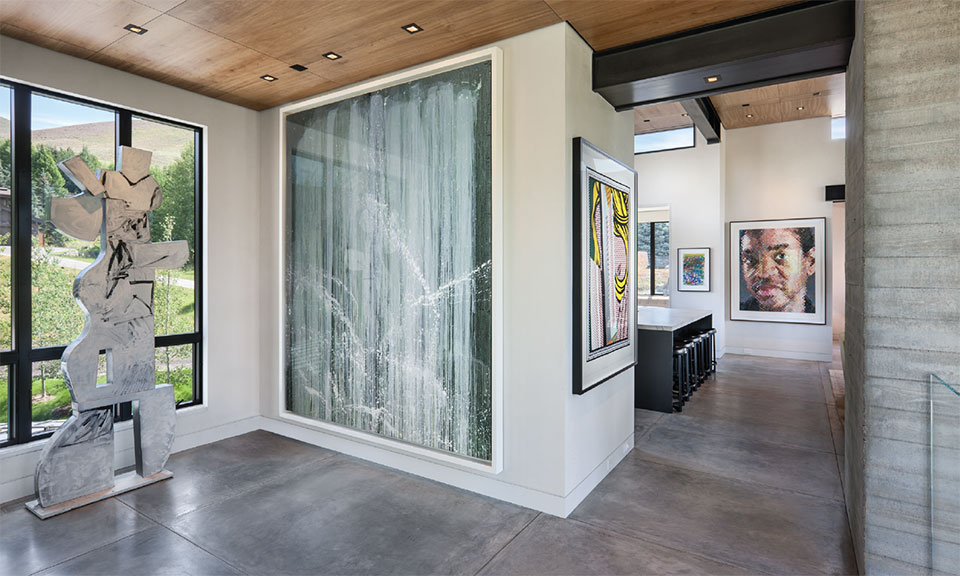
Brenda Moczygemba, AIA, NCARB + Jeff Williams, AIA
“Our clients with significant art collections generally have their own consultants regarding art acquisition, but we are definitely involved in placement and incorporation.”
“We consider the inclusion of art in a project to be a design opportunity. If the art collection is significant, individual pieces will drive the layout. Depending on how the art is displayed and grouped, the arrangement will certainly be a part of the shaping of the home. The style of the art can also influence the style of the architecture. Interior finishes and details are carefully composed so as not to compete and to elevate the experience of the art further.”
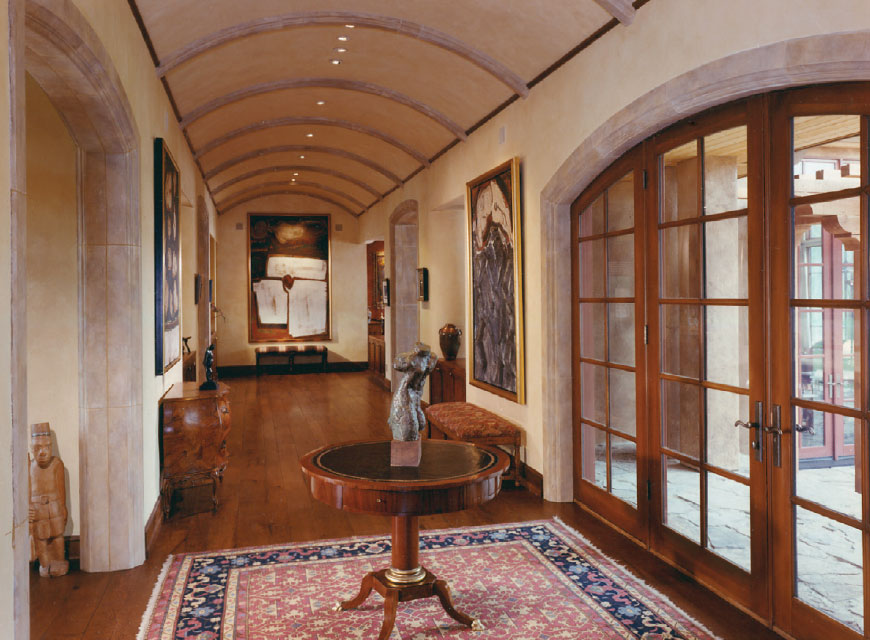
“The style of the art can also influence the style of the architecture. Interior finishes and details are carefully composed so as not to compete and to elevate the experience of the art further.”
–Brenda Moczygemba, AIA, NCARB, + Jeff Williams, AIA, Williams Partners Architects, P.C.
“We do create our designs around a client’s existing collection. In one project, significant pieces of the collection were grouped in a central gallery, a hallway space from which all other rooms branched. The gallery, and therefore the art, became the heart of the home.”
“In another project, fine art was present throughout the home. The physical pathway through the home facilitated gallery-like pauses. Within this client’s home, rooms were at crossroads of the plan layout, with the art becoming a node enabling a visitor or guest to pause as they choose to circulate in different directions.”
“We are witnessing a draw toward larger works and more sculpture both indoors and outdoors, both of which require careful coordination with the architecture regarding placement and incorporation into the overall design.”
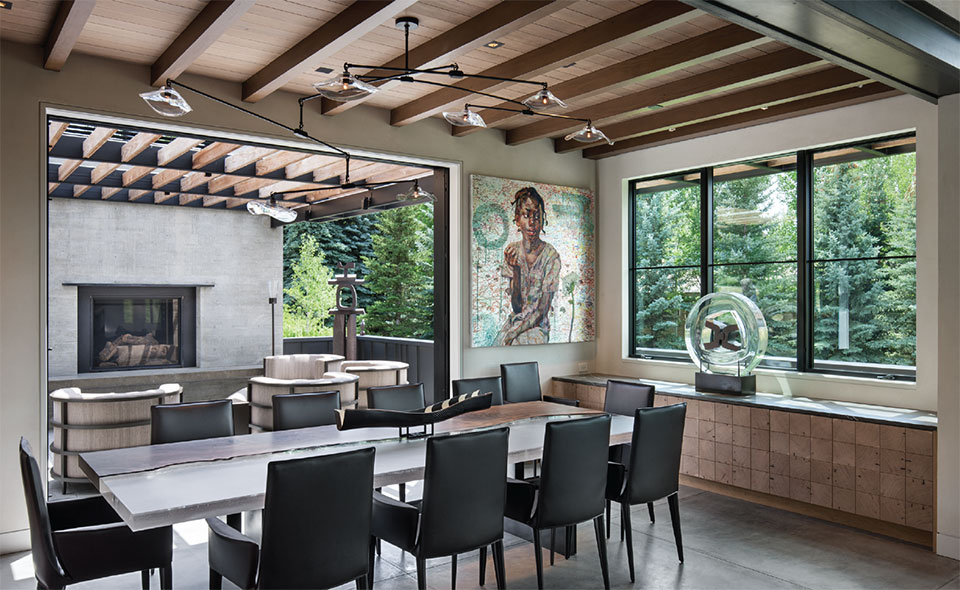
“From an architectural perspective, we become involved with designing for interior and exterior art installations. Often views of the exterior art are considered from inside the home, so axial views formalize the arrangement of the piece and give it importance. In collaboration with the landscape architect, the team creates a setting for the exterior art installation that elevates it as a focal point within the landscape.”
“Our job, as we see it, is to act as the client’s interpreter and guide, sifting through often conflicting requests and requirements to find the project’s unique expression.”
Williams Partners Architects, P.C.
Ketchum, Idaho
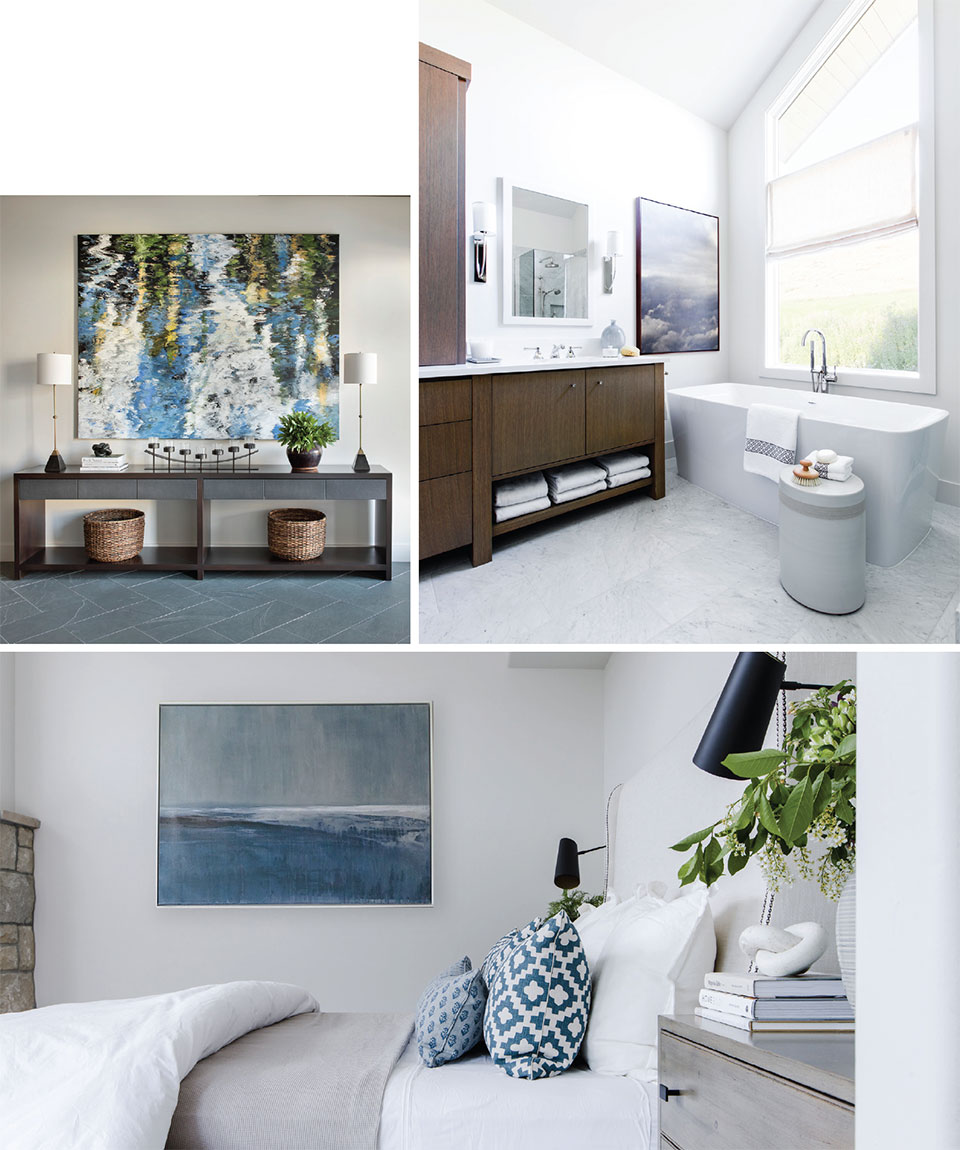
Erika Blank, ASID
“We consult with our clients about art acquisition, placement, and incorporation. We feel art is an integral part of the design, so whenever a client would like our assistance with art selection and procurement, we are delighted to help.”
“We always find art selection for a home to be an opportunity to enhance the overall design of a space. We love to pull color from a client’s artwork and spread it around the room or find a piece that really speaks to the space or location.”
“We recently created a design for a client with an art collection of works they had acquired over several decades. The collection was installed in multiple rooms throughout their home in their previous residence. Within their Sun Valley home, our clients chose to feature their collection as an ensemble. We developed a room layout with an installation of their collection to create a focal wall in the dining room.”
“More recently, we are seeing a trend toward larger-scale, bolder pieces being selected for spaces.”
“While we have not selected or advised on exterior works of art, we would love to.”
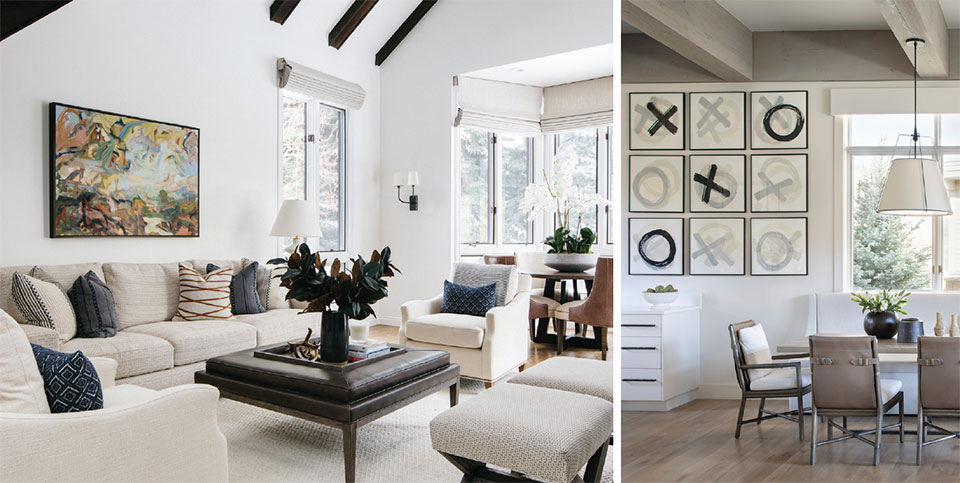
“We always find art selection for a home to be an opportunity to enhance the overall design of a space. We love to pull color from a client’s artwork and spread it around the room or find a piece that really speaks to the space or location.”
–Erika Blank, ASID, Designer, The Picket Fence
The Picket Fence
Ketchum, Idaho
Michael Bulls, AIA + BUFFALO RIXON, AIA
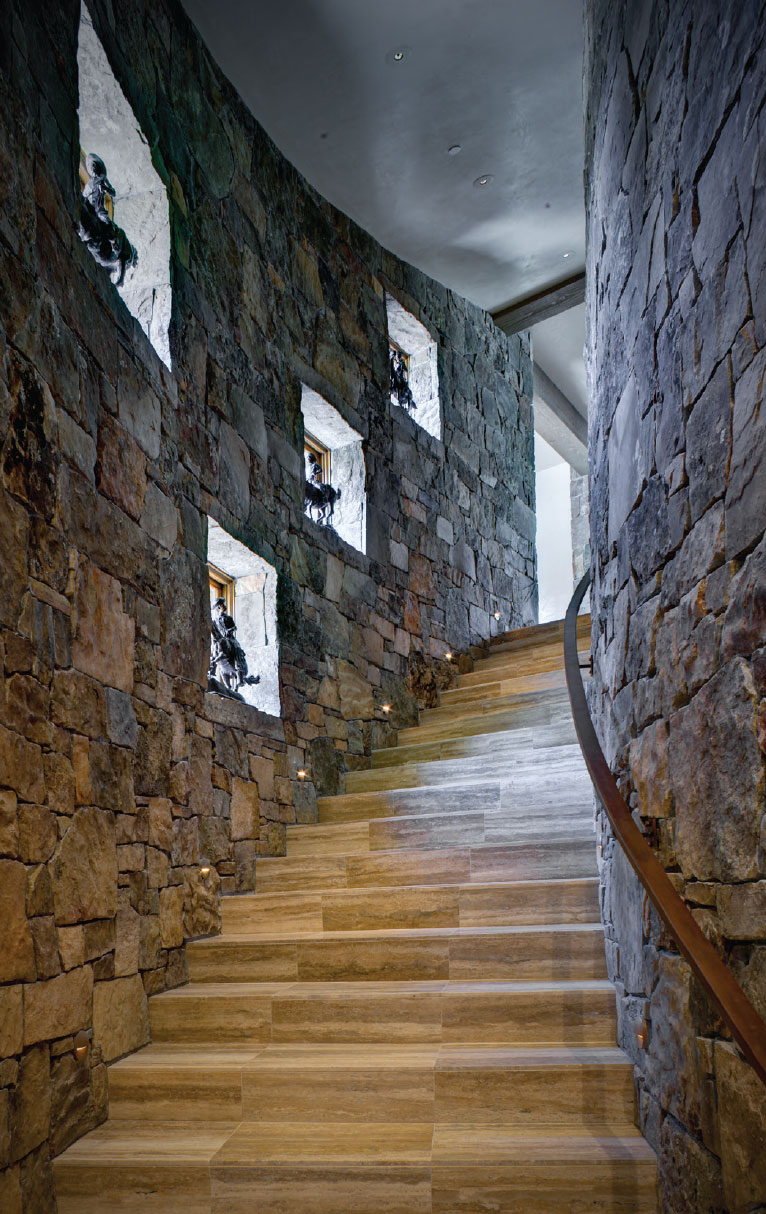
“We typically request an inventory of desired artwork and then, working with the client, begin to designate locations within the overall
layout of the plans.”
–Michael Bulls, AIA, NCARB, RLB Architectura
“Architectural projects have become increasingly complex. A truly collaborative approach is critical to project success. Our studio workspaces are an open environment where project issues and ideas are constantly shared and critiqued throughout the design and construction process. In-house structural engineering provides our projects with invaluable and efficient feedback to project solutions from schematic design to construction phases.”
“Art placement and incorporation into the architectural design and layout of rooms is important. In the design phase, we identify walls or spaces that would best facilitate artwork. We then advise the clients as to an appropriate size or configuration of artwork in a particular location, after which they consult with us regarding a specific art piece they are interested in. Often, this may result in the design of a dedicated wall surface, a recessed wall alcove, or a display created out of custom millwork or glass. Clients sometimes also engage curators from a local gallery, who advise and select artwork for designated spaces within the house. Following placement, other important factors are considered including lighting and support requirements.”
“Architectural design has many opportunities for the inclusion of art, whether it be paintings, sculpture, or other forms. While design trends, particularly in the mountain resort areas, have moved to larger structural spans and extensive exterior glazing systems, some amount of wall construction is required to resist lateral, wind, and seismic loads. These wall surfaces serve as valuable design elements for incorporating art work.
“We typically request an inventory of desired artwork and then, working with the client, begin to designate locations within the overall layout of the plans. Based on the size and characteristics of the artwork, we design spaces to best display the client’s specific art pieces.”
“Clients often have or find sculptural art pieces that they would like to display outside their homes. These sculptural pieces are integrated into the outdoor spaces and become part of the landscape experience.”
“Lighting design using a far greater variety of art-specific light fixtures and the ability to adjust the lamp’s color temperature has become an important design tool to beautifully display art.”
RLB Architectura, P.A.
Ketchum, Idaho
Art demands an environment within which it can be presented to the most significant effect. Successfully sublime architectural alchemy transforms bricks, steel, and concrete into spaces where people want to live. Design professionals possess the experience and creativity to know precisely how and where to blend art and architecture.
Suzanne Hazlett, MBA, CIMA®, CFP®, is a Certified Investment Management Analyst® and CERTIFIED FINANCIAL PLANNERTM professional. Nonfinancial assets, such as fine art, are complex and involve risks, including total loss of value. Special risk considerations include natural events, complex tax considerations, and lack of liquidity. Nonfinancial assets are not in the best interest of all investors. HAZLETT WEALTH MANAGEMENT, LLC is independent of Raymond James and is not a registered broker/dealer. Investment advisory services are offered through Raymond James Financial Services Advisors, Inc. Securities offered through Raymond James Financial Services, Inc., member FINRA/SIPC. 675 Sun Valley Road, Suite J1 + J2, Ketchum, Idaho, 83340 208.726.0605 HazlettWealthManagement.com
